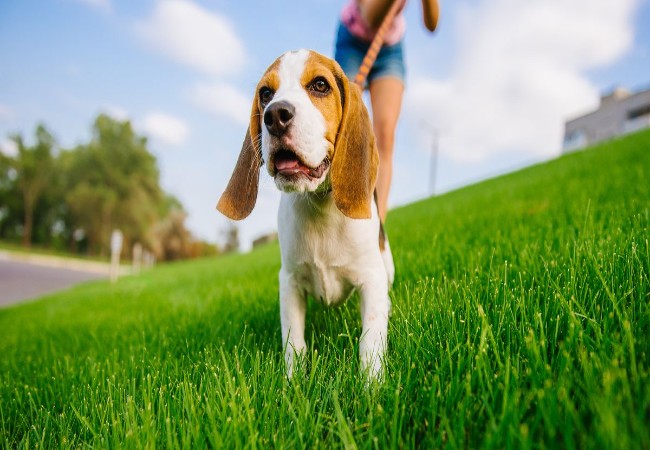Loose Leash Walking 2025: Vet Guide to Calm, Pull-Free Walks 🐶✨

In this article
Loose Leash Walking 2025: Vet Guide to Calm, Pull-Free Walks 🐶✨
By Dr. Duncan Houston BVSc
Does your dog pull like a sled dog the moment you leave the house? Loose leash walking isn’t just about obedience—it’s about creating calmer, more enjoyable outings for you both.
I’m Dr. Duncan Houston. In this article, I’ll walk you through the steps to teach loose leash walking the kind way—without pain, frustration, or expensive gear.
🔍 What Is Loose Leash Walking?
Loose leash walking means your dog walks beside or near you with the leash slack—not pulling, dragging, or constantly needing correction.
It’s not a heel. Loose leash walking allows sniffing and exploration—just without tension or chaos.
🧠 Why Dogs Pull in the First Place
- 🐕 Dogs naturally walk faster than humans
- 📈 They’ve learned pulling = forward motion
- 🧠 Excitement + lack of impulse control = pulling frenzy
- 💡 Often, we unintentionally reinforce pulling by moving with them
✅ VetRecommended Steps to Train Loose Leash Walking
1. Start Indoors or in a Quiet Yard
- 🚫 Don’t start on a busy street—use a nodistraction zone
- 🎯 Mark and reward each step your dog takes beside you on a loose leash
2. Use the “Stop and Reset” Rule
- ⛔ If your dog pulls → stop walking immediately
- 🔁 Wait until they return to your side → reward → continue
3. Use Direction Changes
- 🔄 If your dog surges ahead, change direction without warning
- 🧠 Teaches them to pay attention and stay close
4. Reinforce the Position You Want
- 🐾 Feed treats next to your leg while they’re walking calmly
- 🍖 Use high-value rewards early, then fade to praise or freedom
📋 Sample Loose Leash Training Session (10 Minutes)
| Time | Action | ||| | 0–2 min | Stand still. Reward calm behavior before stepping forward. | | 2–5 min | Walk slowly. Click/treat every 2–3 steps if the leash is slack. | | 5–7 min | Practice stops/starts. Reward when dog stops pulling. | | 7–10 min | Add direction changes. Reward focus and gentle leash tension. |
🚫 What to Avoid
- ❌ Using retractable leashes—they teach pulling, not control
- ❌ Jerking the leash or yanking back—this increases stress
- ❌ Using prong/choke collars—can damage trust and necks
🔁 Be Consistent With These Walking Rules
- 🎾 No forward motion if the leash is tight
- ✅ Praise when the leash is slack—even briefly
- ⏳ Don’t expect perfection right away—build duration gradually
🧠 Loose Leash Walking = Emotional Regulation
When you train your dog to stay near you, pause, and listen—they’re learning emotional control, not just manners. This helps reduce leash reactivity, barking, and overarousal in the long term.
🎁 Woopf Gear That Supports Loose Leash Training
- Bungee Lead – Absorbs sudden pulls, keeps feedback gentle
- Explorer Harness – Reduces pressure on the neck and prevents escape or twisting
- Dual Pocket Dispenser – Quick access to treats during training walks
💬 What Dog Parents Say
“Our walks used to be exhausting. Once we started rewarding the *position* we liked, everything changed.” – Jade & Wally
👩⚕️ Need a VetCurated Leash Training Plan?
Send your dog’s leash issues, breed, and walking routine to Ask A Vet and we’ll build a customized training strategy to get you both walking in sync.
Final Thoughts
Loose leash walking doesn’t require force—it requires clarity, consistency, and calm communication. When your dog learns that walking beside you is rewarding, walks become a bonding experience, not a battle.






